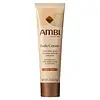What's inside
What's inside
 Key Ingredients
Key Ingredients

 Benefits
Benefits

 Concerns
Concerns

 Ingredients Side-by-side
Ingredients Side-by-side

Aloe Barbadensis Leaf Juice
Skin ConditioningWater
Skin ConditioningHelianthus Annuus Seed Oil
EmollientIsopropyl Palmitate
EmollientGlyceryl Stearate
EmollientCetyl Alcohol
EmollientDimethyl Sulfone
SolventStearic Acid
CleansingSodium Ascorbyl Phosphate
AntioxidantGlycerin
HumectantButyrospermum Parkii Butter
Skin ConditioningSimmondsia Chinensis Seed Oil
EmollientPanthenol
Skin ConditioningTocopheryl Acetate
AntioxidantCentella Asiatica Extract
CleansingEquisetum Arvense Extract
AstringentGeranium Maculatum Extract
TonicTaraxacum Officinale Extract
Skin ConditioningCamellia Sinensis Leaf Extract
AntimicrobialXanthan Gum
EmulsifyingAlcohol
AntimicrobialPhenoxyethanol
PreservativeEthylhexylglycerin
Skin ConditioningAloe Barbadensis Leaf Juice, Water, Helianthus Annuus Seed Oil, Isopropyl Palmitate, Glyceryl Stearate, Cetyl Alcohol, Dimethyl Sulfone, Stearic Acid, Sodium Ascorbyl Phosphate, Glycerin, Butyrospermum Parkii Butter, Simmondsia Chinensis Seed Oil, Panthenol, Tocopheryl Acetate, Centella Asiatica Extract, Equisetum Arvense Extract, Geranium Maculatum Extract, Taraxacum Officinale Extract, Camellia Sinensis Leaf Extract, Xanthan Gum, Alcohol, Phenoxyethanol, Ethylhexylglycerin
Hydroquinone 2%
StabilisingEthylhexyl Methoxycinnamate
UV AbsorberWater
Skin ConditioningGlycerin
HumectantIsopropyl Myristate
EmollientStearic Acid
CleansingCetyl Alcohol
EmollientPotassium Cetyl Phosphate
EmulsifyingBetaine
HumectantGlyceryl Stearate
EmollientPEG-100 Stearate
Sodium Metabisulfite
AntioxidantPentaerythrityl Tetra-Di-T-Butyl Hydroxyhydrocinnamate
AntioxidantParfum
MaskingTocopheryl Acetate
AntioxidantMethylparaben
PreservativeDisodium EDTA
Lactic Acid
BufferingPropylparaben
PreservativeEthylparaben
PreservativePEG-16 Soy Sterol
EmulsifyingSodium Ascorbyl Phosphate
AntioxidantButylene Glycol
HumectantGlycine Soja Protein
EmulsifyingHydroquinone 2%, Ethylhexyl Methoxycinnamate, Water, Glycerin, Isopropyl Myristate, Stearic Acid, Cetyl Alcohol, Potassium Cetyl Phosphate, Betaine, Glyceryl Stearate, PEG-100 Stearate, Sodium Metabisulfite, Pentaerythrityl Tetra-Di-T-Butyl Hydroxyhydrocinnamate, Parfum, Tocopheryl Acetate, Methylparaben, Disodium EDTA, Lactic Acid, Propylparaben, Ethylparaben, PEG-16 Soy Sterol, Sodium Ascorbyl Phosphate, Butylene Glycol, Glycine Soja Protein
Ingredients Explained
These ingredients are found in both products.
Ingredients higher up in an ingredient list are typically present in a larger amount.
Cetyl Alcohol is a fatty alcohol. Fatty Alcohols are most often used as an emollient or to thicken a product.
Its main roles are:
Though it has "alcohol" in the name, it is not related to denatured alcohol or ethyl alcohol.
The FDA allows products labeled "alcohol-free" to have fatty alcohols.
Learn more about Cetyl AlcoholGlycerin is already naturally found in your skin. It helps moisturize and protect your skin.
A study from 2016 found glycerin to be more effective as a humectant than AHAs and hyaluronic acid.
As a humectant, it helps the skin stay hydrated by pulling moisture to your skin. The low molecular weight of glycerin allows it to pull moisture into the deeper layers of your skin.
Hydrated skin improves your skin barrier; Your skin barrier helps protect against irritants and bacteria.
Glycerin has also been found to have antimicrobial and antiviral properties. Due to these properties, glycerin is often used in wound and burn treatments.
In cosmetics, glycerin is usually derived from plants such as soybean or palm. However, it can also be sourced from animals, such as tallow or animal fat.
This ingredient is organic, colorless, odorless, and non-toxic.
Glycerin is the name for this ingredient in American English. British English uses Glycerol/Glycerine.
Learn more about GlycerinGlyceryl Stearate is a mix of glycerin and stearic acid.
It is used to stabilize the mixing of water and oil ingredients. By preventing these ingredients from separating, it can help elongate shelf life. It can also help thicken the product's texture.
As an emollient, it helps soften skin and supports barrier-replenishing ingredients.
In cosmetics, Glyceryl Stearate is often made from vegetable oils or synthetically produced.
This ingredient may not be fungal-acne safe
Fun fact: The human body also creates Glyceryl Stearate naturally.
Learn more about Glyceryl StearateSodium Ascorbyl Phosphate is a form of Vitamin C. It is the salt of ascorbic acid.
This ingredient is more gentle than ascorbic acid. It is also more stable when exposed to light and oxygen.
Vitamin C helps reduce redness, improve skin texture, reduce the effects of aging, reduce the visibility of dark spots, and brighten skin.
Your skin uses Vitamin C to produce collagen and collagen production plays a role in having a strong skin barrier and plump skin. As an antioxidant, this ingredient also helps reduce the signs of aging such as fine-lines and wrinkles.
VItamin C helps brighten skin by blocking the process of skin darkening.
In a 2011 study, Sodium Ascorbyl Phosphate was found to have antibacterial properties. This may help treat acne.
Read more about other types of Vitamin C:
Learn more about Sodium Ascorbyl PhosphateStearic Acid is a fatty acid. It is an emollient, emulsifier, and texture enhancer.
As an emollient, stearic acid helps soften skin. It aids the skin's protective barrier by preventing water loss. It also provides a gentle cleansing effect without stripping away natural oils.
Stearic acid may also be used to enhance the texture of products. It can add volume and stabilize ingredients such as water and oil. This can help water and oil ingredients from separating.
Sources of stearic acid include animal or vegetable fats/oils such as coconut or shea. It can be naturally found in butter, cocoa butter, shea butter, vegetable fats, and animal tallow.
This ingredient may not be Malassezia folliculitis, or fungal-acne safe.
Learn more about Stearic AcidTocopheryl Acetate is AKA Vitamin E. It is an antioxidant and protects your skin from free radicals. Free radicals damage the skin by breaking down collagen.
One study found using Tocopheryl Acetate with Vitamin C decreased the number of sunburned cells.
Tocopheryl Acetate is commonly found in both skincare and dietary supplements.
Learn more about Tocopheryl AcetateWater. It's the most common cosmetic ingredient of all. You'll usually see it at the top of ingredient lists, meaning that it makes up the largest part of the product.
So why is it so popular? Water most often acts as a solvent - this means that it helps dissolve other ingredients into the formulation.
You'll also recognize water as that liquid we all need to stay alive. If you see this, drink a glass of water. Stay hydrated!
Learn more about Water